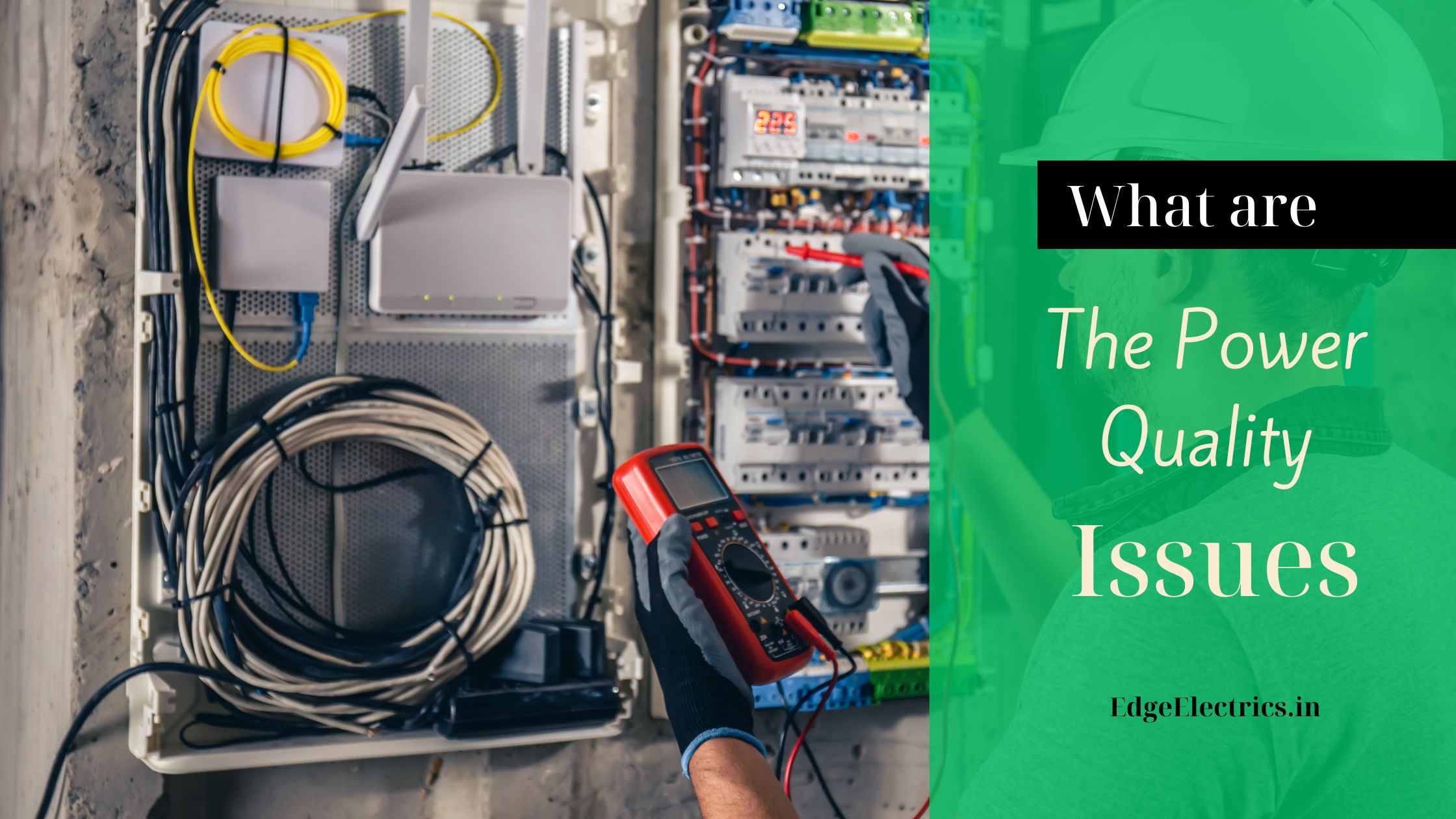
Static frequency converters, cycloconverters, induction furnaces, and arcing devices are common sources of interharmonic disturbances in power quality systems. Power line carrier signals also contribute to interharmonics. In addition, notching is a recurring voltage disturbance that results from the normal operation of power electronic devices as current transitions from one phase to another. Here we know about Source of Power Quality.
It refers to the characteristics of the electrical power supplied to devices and systems. This article delves into the source of power quality issues. And the importance of maintaining high power quality, and the methods to monitor and improve it.
Understanding Power Quality in Electrical Systems
It’s involves several key electrical criteria, including voltage, frequency, and waveform. It ensures that electrical energy is delivered smoothly and consistently within set parameters, enabling devices to operate correctly. Deviations from these parameters can lead to this issues, resulting in equipment malfunctions, inefficiencies, and potential hazards. High power quality refers to the stable power power supply where poor power quality can cause equipment malfunction, reduced lifespan and enhanced operational costs.
Sources of Power Quality Issues
It’s problems generally arise from two main sources: internal and external factors. Here’s a closer look:
1. External Sources
- Utility Grid Disturbances: Fluctuations in the power grid often lead to poor power quality. These fluctuations can arise from generation problems, faults in transmission lines, or imbalances between supply and demand, resulting in issues such as voltage sags, swells, or even blackouts.
- Weather Conditions: Natural events like storms, lightning, and high winds can disrupt power lines and transformers, causing abrupt changes in voltage and frequency. Severe weather can damage transmission infrastructure, resulting in extended this issues.
- Harmonics from Nearby Industries: Industrial equipment, particularly those with heavy motors or large power electronics, can produce harmonic distortions that impact nearby facilities. These harmonics disrupt the ideal sinusoidal AC power waveform, resulting in greater energy losses and increased heating in equipment.
- Power Factor Issues: Large, reactive loads (like motors) consume more apparent power than they should, influencing the overall power factor on the grid and leading to inefficiencies.
2. Internal Sources
- Heavy Motor Starts: When large motors start up, they draw a high inrush current that can lead to voltage sags across the system. This sudden drop in voltage can affect other devices on the same network, potentially causing them to malfunction.
- Switching Power Supplies: Devices equipped with switching power supplies. Such as computers and LED lighting, can introduce harmonics into the power system. These harmonics cause waveform distortion, which degradesit. Over time, the accumulation of these distortions can result in power losses and overheating in transformers.
- Poor Grounding and Wiring: Inadequate grounding or faulty wiring can cause voltage imbalances. And interference, affecting the performance of sensitive equipment. Proper grounding is crucial to minimize transient voltage spikes and prevent electrical shocks.
- Power Electronics and Variable Frequency Drives (VFDs): Many modern industrial applications use VFDs for efficient motor control. Moreover, VFDs generate harmonics and can introduce electrical noise, which can affect it. If not adequately managed.
- Load Imbalance: In systems with uneven power distribution, one phase may bear a heavier load than the others. This imbalance can lead to voltage variations and decrease overall system efficiency.
The Impact of Poor Power Quality
Poor power quality has far-reaching consequences beyond just equipment failure. Here are some of the main impacts:
- Reduced Equipment Life: Voltage fluctuations and harmonic distortions accelerate wear and tear, leading to premature equipment failure.
- Increased Operational Costs: Inefficiencies caused by poor power quality increase energy consumption and operational expenses.
- Downtime and Productivity Loss: Power quality issues cause interruptions, leading to costly downtime, especially in industrial and commercial settings.
- Safety Risks: Voltage spikes, transient surges, and grounding faults pose safety hazards to personnel and infrastructure.
What is Electrical Power Quality – A Beginner’s Guide
Conclusion
Understanding the source of power quality issues. And implementing effective management strategies is crucial for maintaining the reliability and efficiency of electrical systems. By addressing voltage sags and surges, harmonics, transients, voltage imbalance, and flicker. We can ensure a stable and high-quality power supply, ultimately protecting our equipment and reducing operational costs.
continue reading
Related Posts
Power Quality Disturbances are voltage sags, swells, spikes, fluctuation and […]
Maintaining Good Power Quality includes several important characteristics such as […]
Ensuring good power quality is crucial in electrical systems. As […]



